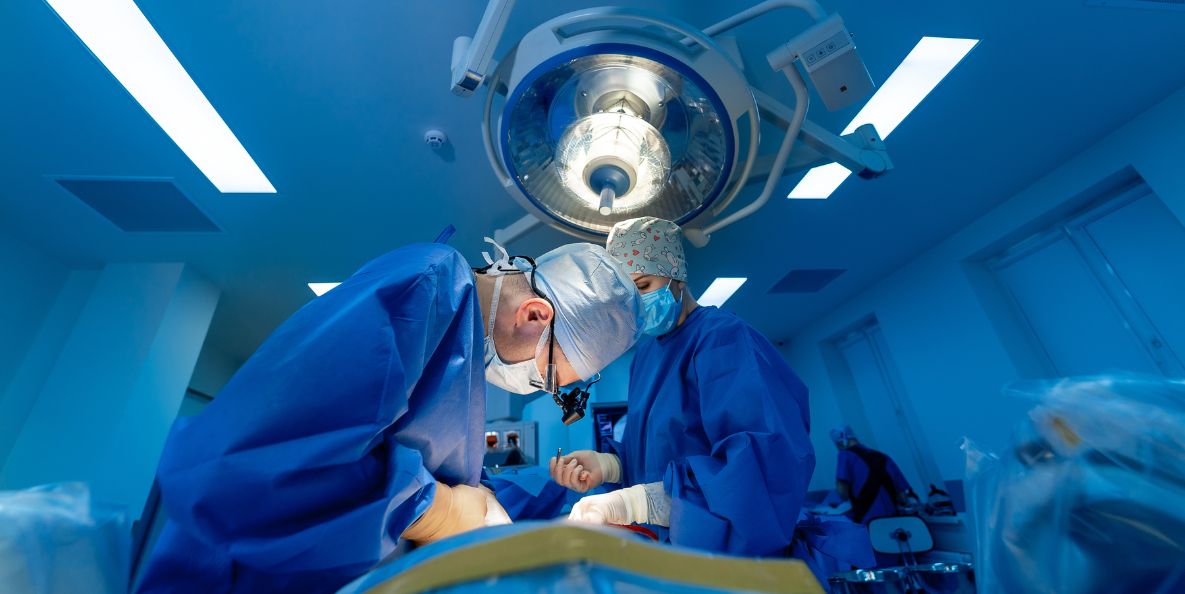Categories
Minimal Invasive Surgery (MIS) in Children - Everything You Need to Know
Nov 29, 2022
Minimally invasive surgery is a surgical approach in which small incisions are used instead of the large incisions made in traditional surgery. At the Rainbow Children’s Hospital, we use minimally invasive surgery whenever possible. Our medical staff is the top specialist in the country in the field of minimally invasive surgery in children.
Benefits of Minimally Invasive Surgery (MIS)
1. Less pain
2. Less tissue damage or trauma because of smaller incisions
3. Quicker recovery
4. Shorter stay at the hospital
5. Quicker return to the regular activities and school
6. Less scarring
7. Lower risk of infection
Types of Minimally Invasive Surgery
Laparoscopy - In this, the procedures are performed in the abdomen like the single-incision pediatric endoscopic surgery.
Fetoscopy - This procedure is performed in the uterus.
Thoracoscopy - In this, the procedure is performed in the chest.
Preparing your child for the Minimally Invasive Surgery
Preparing for the minimally invasive surgical procedure is similar to preparing for other procedures. You must ensure that your child follows all the eating and drinking rules before the surgery. It is important to ensure that their stomach is completely empty while they are being administered anesthesia. Failure to do so can cause the contents of the stomach to come up into the lungs. It is known as aspiration and can be a serious problem. Also, you should discuss the medicines of your child with the anesthesia team for ensuring that your child can take it. Usually, your child is allowed to take some medicines with a sip of water.
During the Minimally Invasive Surgery
1. The first step will be administering general anesthesia to the child during the procedure. It is for keeping your child asleep during the procedure so that they don’t feel any pain or have a memory of the surgery.
2. Next, the surgeon will be making a small incision to get access to the affected body part. These incisions will be anywhere between 2 mm to 5 mm. Then, the surgeon will place the surgical instruments through the openings. A camera with light will also be introduced through the opening so that the surgeons can see the area. In some cases, the surgeon will fill the area with carbon dioxide gas for expanding it and get a better view.
3. With the help of surgical instruments, the surgeons will be able to explore, repair, or remove the problem from the body of your child. Once the procedure is completed, the surgeon will be closing the port site with stitches or absorbable sutures under the skin.
4. The time for the procedure will depend on the type of surgery your child is having. On average, it will take somewhere about 30 minutes to 2 hours to finish the surgery. Depending on the child’s condition, some complex procedure might take more time.
After the Minimally Invasive Surgery (MIS)
1. After the procedure, your child might have the following side effects
Vomiting and Nausea - Just as it is with any other procedures with anesthesia, after MIS, your child might experience some vomiting and nausea. This is because of the anesthesia medications that are used as well as the operative manipulation. At the Rainbow Children’s Hospital, the team uses an approach for decreasing postoperative pain, vomiting, and nausea.
Shoulder pain - In some cases, your child might experience some shoulder pain. It is a unique side effect that occurs about 2 to 3 days after the procedure. The reason behind this is the carbon dioxide gas used during the procedure. It goes away on its own spontaneously.
2. The length of the hospital stay will vary depending on the procedure your child is having. Usually, it is between 1 to 5 days.
3. The recovery time also varies according to the procedure. Usually, children can get back to most of their regular activities in a couple of days or weeks. Your child will be allowed to take a shower two days after the procedure. It is important that you don’t take a bath in a tub or swim for about a week after the surgery.
Caring about your child after the Minimally Invasive Surgery
Pain Control - You can talk to your doctor about the pain medications. Usually, over-the-counter medications will work. Occasionally, the doctor might prescribe pain medications.
Drinking and Eating - In most cases, by the time your child is discharged from the hospital, your child will be able to eat regular foods.
Activity - It is recommended that you let your child return to regular activities gradually. For certain complex procedures, there will be specific limitations and instructions.
The expert pediatric doctors at the Rainbow Children’s Hospital offer minimally invasive procedures for different surgical specialties for unborn babies to adolescents. Our multidisciplinary care team will ensure that your child receives the best care he/she needs.







